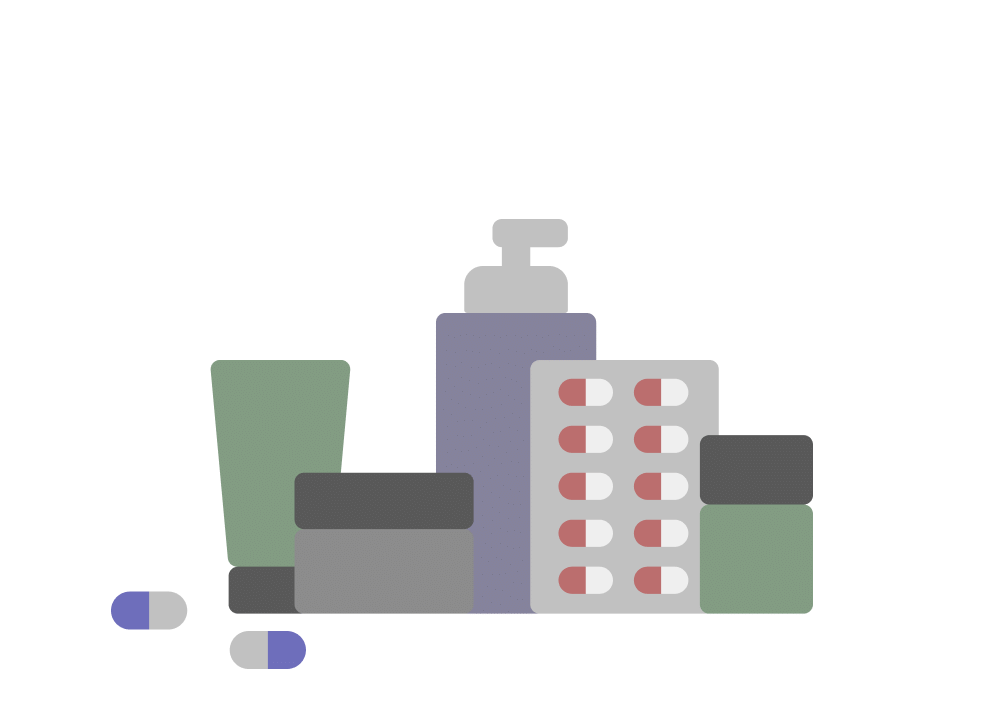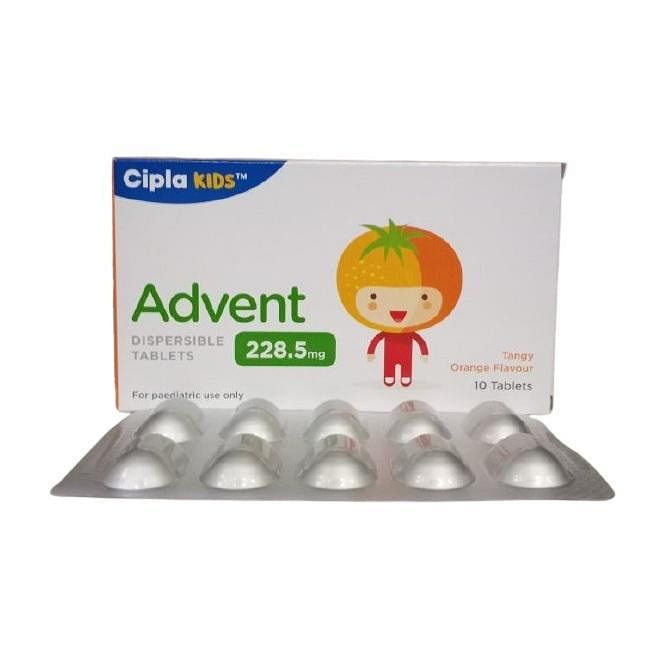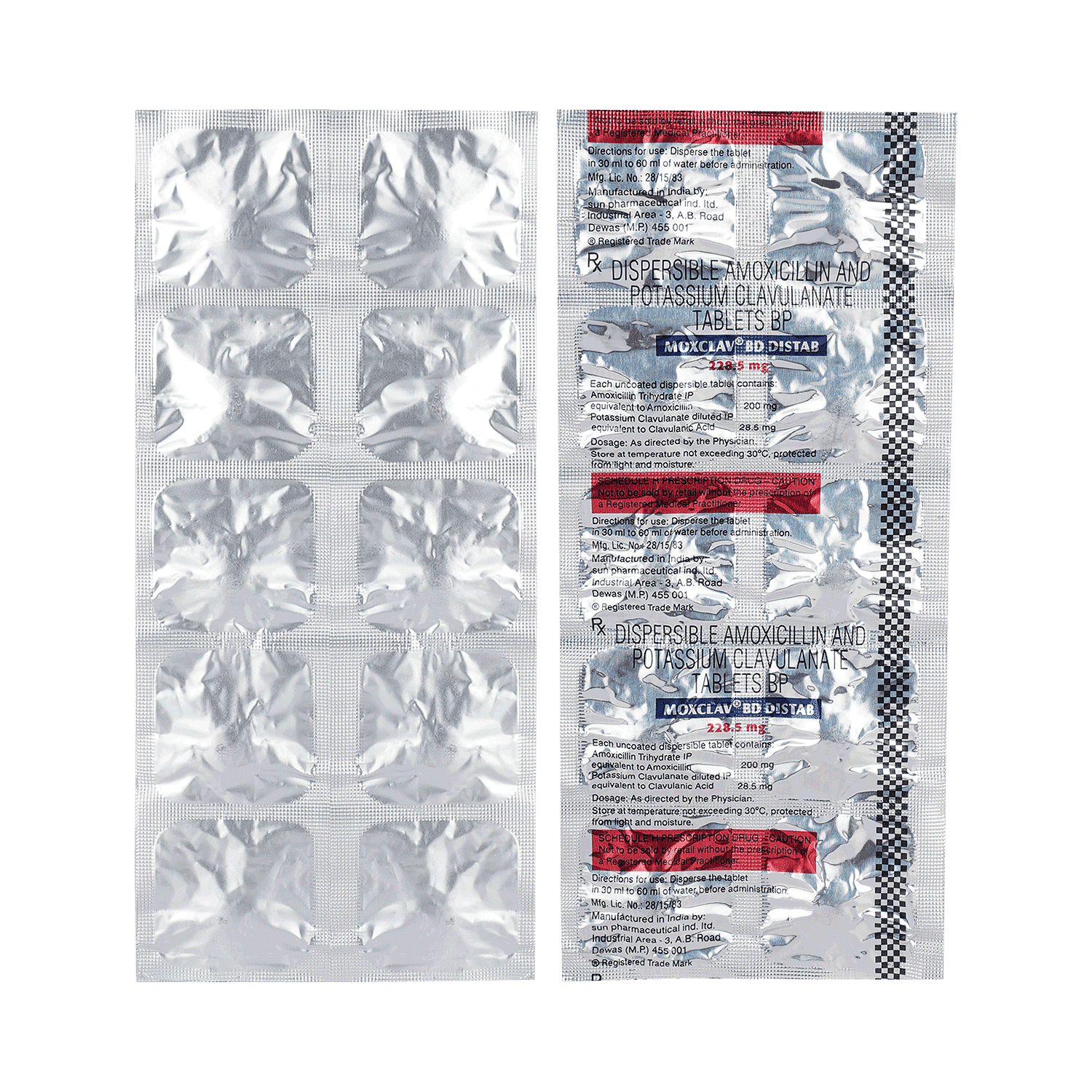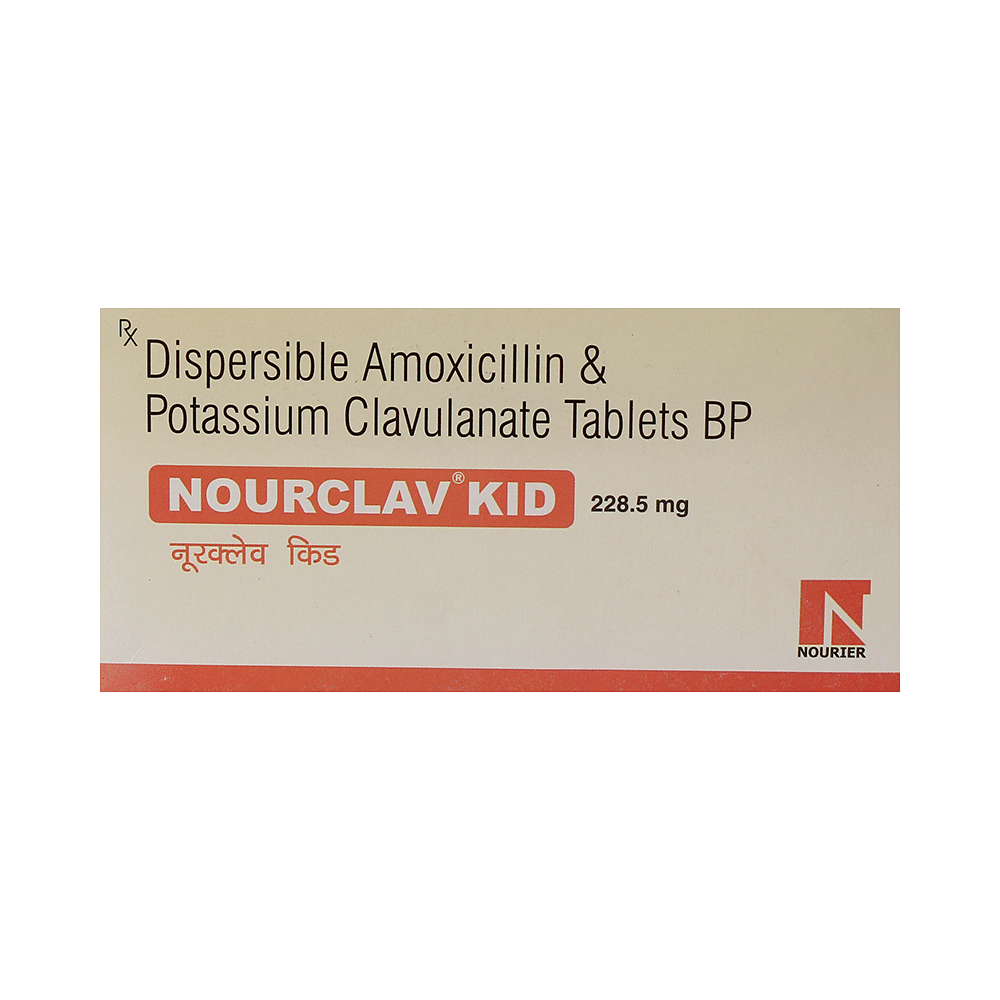
Bilclav 200 mg/28.5 mg Tablet DT
Manufacturer
Viilbery Healthcare Pvt Ltd
Salt Composition
Amoxycillin (200mg) + Clavulanic Acid (28.5mg)
Key Information
Short Description
Bilclav 200 mg/28.5 mg Tablet DT is an antibiotic medicine that helps treat bacterial infections of the ear, nose, throat, chest, lungs, teeth, skin, and urinary tract.
Dosage Form
Tablet DT
Introduction
Bilclav 200 mg/28.5 mg Tablet DT is an antibiotic medicine that helps treat bacterial infections of the ear, nose, throat, chest, lungs, teeth, skin, and urinary tract. It is capable of killing bacteria that have become resistant to other therapies and thus also helps treat tuberculosis that is resistant to other treatments.
Directions for Use
Never give Bilclav 200 mg/28.5 mg Tablet DT to your child until and unless prescribed by the doctor. You must also never share your child’s medicine with anyone else even if they show similar symptoms.
Safety Information
Side Effects
No common side effects listed.
How it works
Bilclav 200 mg/28.5 mg Tablet DT is an antibiotic. It has two active agents amoxycillin and clavulanic acid. Amoxycillin works by preventing the formation of the bacterial protective covering (cell wall) essential for the survival of the bacteria. Whereas clavulanic acid serves a special purpose of inhibiting an enzyme (beta-lactamase) that is produced by resistant bacteria.
Quick Tips
Your child must complete the entire course of antibiotics. Stopping too soon may cause the bacteria to multiply again or cause another infection. Your child may have a bitter taste in the mouth after the intake of Bilclav 200 mg/28.5 mg Tablet DT. Eating citrus fruit or sipping plenty of water or fruit juice may help. Encourage your child to drink plenty of water in case diarrhea develops as a side effect. Never give Bilclav 200 mg/28.5 mg Tablet DT until and unless prescribed by the doctor. Do not give Bilclav 200 mg/28.5 mg Tablet DT to treat common cold and flu-like symptoms caused by viruses.
Related Medicines

Advent 200mg/28.5mg Tablet DT

Moximust-Kid Tablet DT

Alepam 200mg/28.5mg Tablet DT

Moxclav BD Distab 228.5 Tablet

Nourclav Kid 228.5mg Tablet DT

Formentin 228.5 Kid Tablet DT

Extclav 200mg/28.5mg Tablet DT

Cledomox 200 mg/28.5 mg Tablet DT

Bi Clav Kid 200mg/28.5mg Tablet DT

Awin Kid 200mg/28.5mg Tablet DT
Frequently asked questions
Can other medicines be taken at the same time as Bilclav 200 mg/28.5 mg Tablet DT?
Bilclav 200 mg/28.5 mg Tablet DT may interact with other medications. Tell your child's doctor about all other medicines they are taking before starting this medication. It is important to consult with a healthcare professional for guidance on safe drug combinations.
Can I get my child vaccinated while on treatment with Bilclav 200 mg/28.5 mg Tablet DT?
In general, antibiotics do not interfere with vaccines or cause reactions in children who have recently received them. However, it is recommended that your child's doctor assesses the need for vaccination after a course of antibiotics has been completed as per their illness and potential side effects.
Which lab tests may my child undergo while taking Bilclav 200 mg/28.5 mg Tablet DT on a long-term basis?
The doctor may periodically monitor kidney and liver function tests during prolonged treatment with this medication to assess your child's health.
Can I give a higher than the recommended dose of Bilclav 200 mg/28.5 mg Tablet DT to my child?
Giving a higher dose of this medicine can increase the risks of side effects, so it is important not to exceed the recommended dosage as prescribed by your doctor.
Can I stop giving Bilclav 200 mg/28.5 mg Tablet DT to my child when the symptoms are relieved?
No, do not stop the medication unless you have completed the full course of treatment as prescribed by your doctor. Symptoms may improve before the infection is fully cured, so it is crucial to continue the medication until the doctor advises otherwise.
Can the use of Bilclav 200 mg/28.5 mg Tablet DT cause diarrhea?
Yes, Bilclav 200 mg/28.5 mg Tablet DT can cause diarrhea. This is because it kills harmful bacteria in the body and also affects the beneficial bacteria in the child’s stomach.
Do all viral common colds result in secondary bacterial infection?
Most of the time, bacterial infections do not follow viral infections. Using antibiotics for a viral infection can increase your child's risk of side effects, so it is crucial to use them only when prescribed by a doctor.
The mucus coming out of my child’s nose is yellow-green. Is it a sign of a bacterial infection?
Yellow or green mucus in the nose is not necessarily a sign that antibiotics are needed for your child. During a common cold, it's normal for mucus to thicken and change color from clear to yellow or green. These symptoms typically last for 7-10 days. If you notice any other unusual signs such as breathing difficulty or severe swelling of the face, consult with your doctor immediately.
Is there any sign which shows that my child needs immediate medical attention?
If your child experiences serious allergic reactions (breathing difficulties, skin rashes), gastrointestinal problems (diarrhea), or liver damage (weakness, paleness, vomiting) it is important to seek immediate medical attention. These symptoms can be indicative of complications and require professional assessment.


